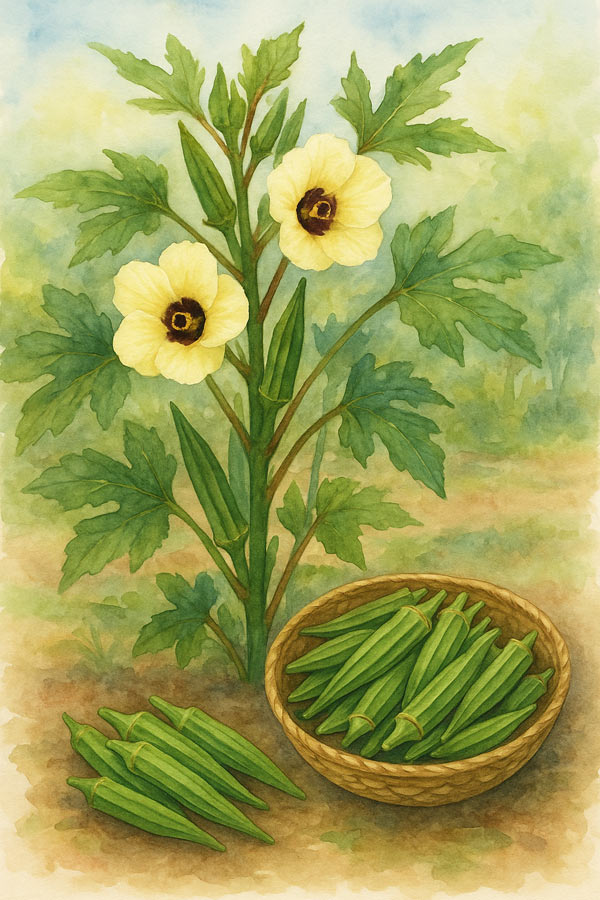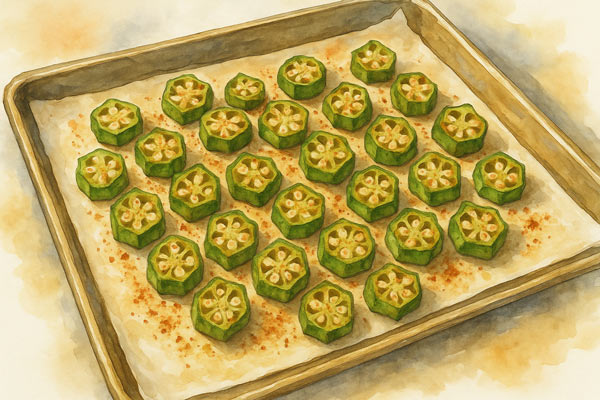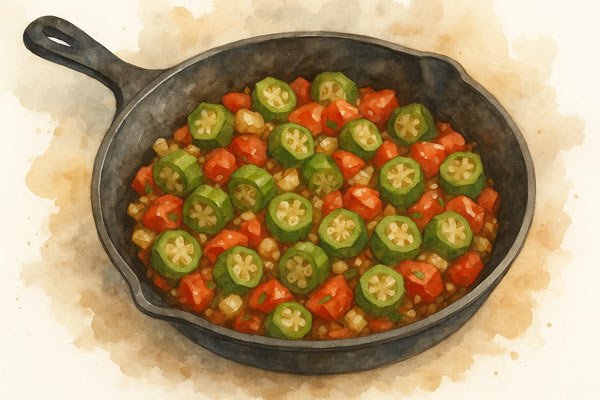 From Backyard Garden to Gumbo Pot—Season After Season
From Backyard Garden to Gumbo Pot—Season After Season
I first planted okra a few years ago from a seed packet I grabbed on impulse. I wasn’t sure how it would do in my Central Florida garden, but I figured I’d give it a try.
It did beautifully. By the end of summer, the plants towered over me—slender stalks topped with pale yellow blooms and crisp green pods. After harvesting more okra than I could eat, I let a few pods mature and dry out on the plant. I saved the seeds, tucked them into a jar, and replanted them the following May. Now, it’s a yearly rhythm: soak the seeds, sow them into warm soil, and let the summer sun do the rest.
A Little History: Where Okra Comes From
Okra (Abelmoschus esculentus) is believed to have originated in Africa, where it’s still a staple crop.
The plant thrives in heat and drought, making it ideal for Florida summers. It’s part of the mallow family—related to hibiscus—and its beautiful flowers hint at that lineage. Okra has a long-standing place in cultural food traditions, from West African stews to Creole gumbo to pickled roadside snacks in the South.
How to Save Okra Seeds for Next Year
Saving okra seeds is simple—and rewarding. Here’s how I do it:
Step-by-Step Guide:
-
Choose a few pods and let them dry completely on the plant. They’ll become brown, brittle, and oversized.
-
Clip the pods off once fully dry and bring them indoors.
-
Split open the pods and remove the seeds. They should be hard and dry to the touch.
-
Spread the seeds on a paper towel or screen and let them air-dry for another week.
-
Store the seeds in a cool, dry place. I keep mine in a labeled glass jar, but you can also store them in an envelope.
Pro tip: If you’re unsure about dryness, seeds should rattle in the pod when shaken.
These saved seeds can last for years and are well adapted to your specific garden climate—making each season’s crop a little more resilient.
Garden-to-Table Goodness: Simple Okra Recipes
Here are two of my go-to ways to use garden-fresh okra.
Crispy Roasted Okra
No slime, just crunch!
Ingredients:
-
2 cups fresh okra, sliced into ½-inch rounds
-
1 tbsp olive oil
-
Salt, pepper, and smoked paprika to taste
Instructions:
-
Preheat oven to 425°F.
-
Toss okra with oil and seasoning.
-
Spread in a single layer on a baking sheet.
-
Roast for 15–20 minutes, shaking the pan halfway through, until browned and crispy.
Simple Skillet Okra and Tomatoes
Southern comfort in a single pan.
Ingredients:
-
2 cups sliced okra
-
1 cup chopped tomatoes (fresh or canned)
-
½ onion, diced
-
2 cloves garlic, minced
-
1 tbsp oil or butter
-
Salt and pepper to taste
Instructions:
-
Sauté onion and garlic in oil until softened.
-
Add okra and cook 5–7 minutes, stirring occasionally.
-
Stir in tomatoes and simmer another 5 minutes.
-
Season and serve warm—with cornbread, if you’re lucky.
Final Thoughts
Okra is more than just a heat-loving plant—it’s a connection to history, tradition, and sustainability. It asks little, gives a lot, and teaches us that sometimes the best things come from one simple act: saving seeds.
Whether you’re growing it for the pods, the pollinators, or the plate, okra deserves a place in every Central Florida summer garden.


